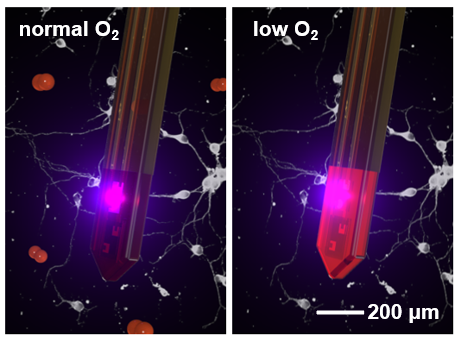Abstract
Real-time detection of tissue oxygenation in the nervous system is crucial in neuroscience studies and clinical diagnostics. Complementary to blood oxygenation levels, the partial pressure of oxygen in brain tissue ( pbto2) plays a key role in regulating local neural activities and metabolism. Here we develop an implantable optoelectronic probe that wirelessly and continuously monitors pbto2 signals in the deep brain of freely moving rodents. The thin-film, microscale implant integrates a light-emitting diode and a photodetector, and is coated with an oxygen-sensitive phosphorescent film. Powered by a battery or an inductive coil, a miniaturized circuit is capable of recording and wirelessly transmitting pbto2 signals. The wireless micro-probe captures cerebral hypoxia states in mice in various scenarios, including altered inspired oxygen concentrations and acute ischaemia. In mouse models with seizures, the micro-probe associates temporal pbto2 variations in multiple brain regions with electrical stimulations applied to the hippocampus. Our probe and method offer important insights into neuroscience studies regarding neurometabolic coupling and pave the way for the clinical application of implantable wireless optoelectronic probes.

|
Paper Link: https://www.nature.com/articles/s41566-023-01374-y
|
